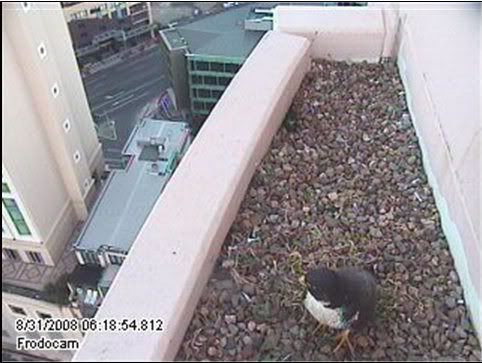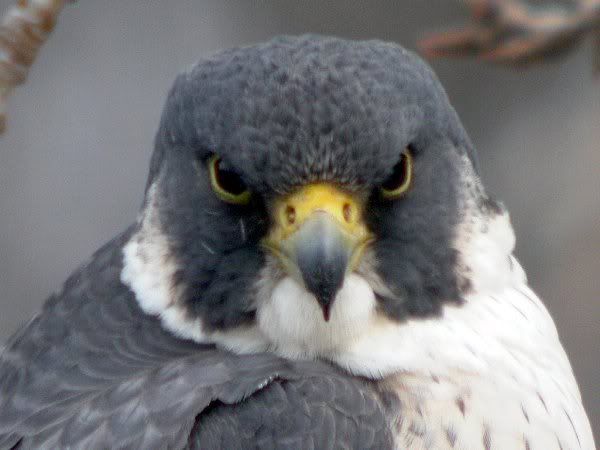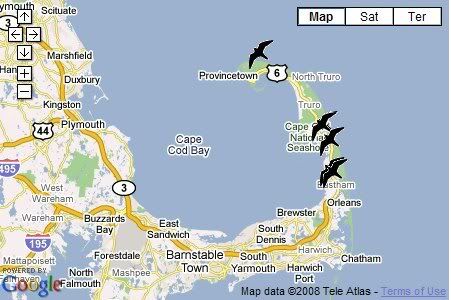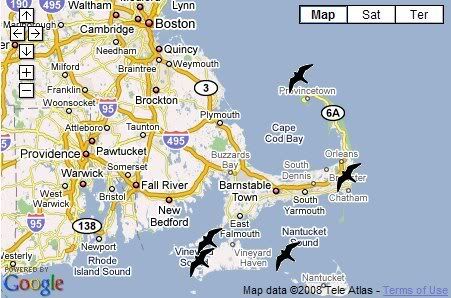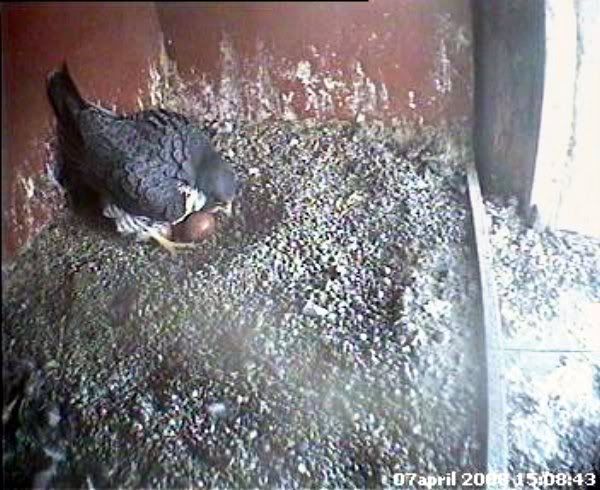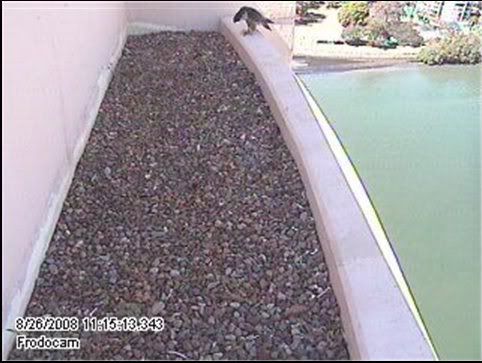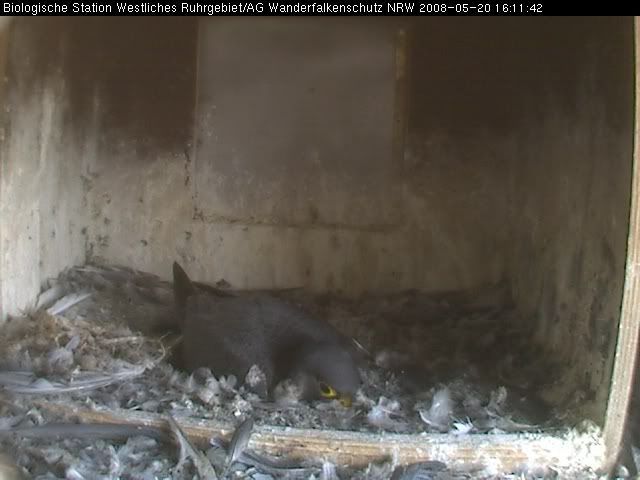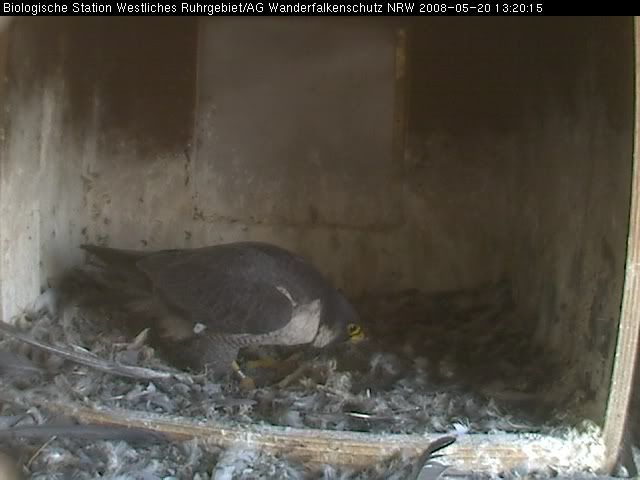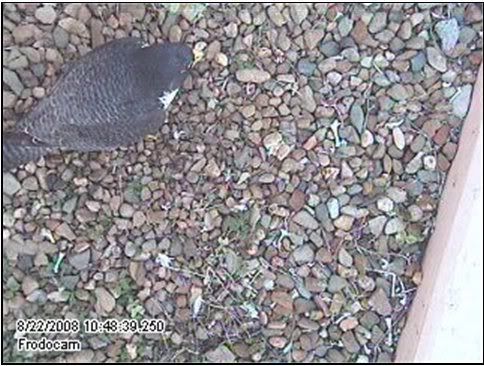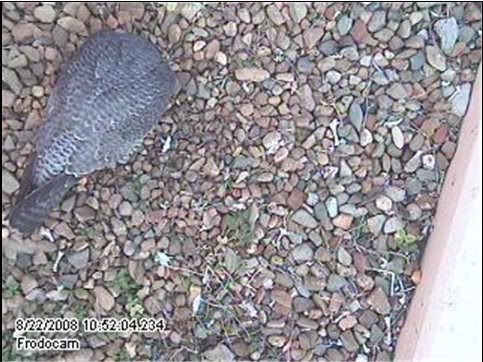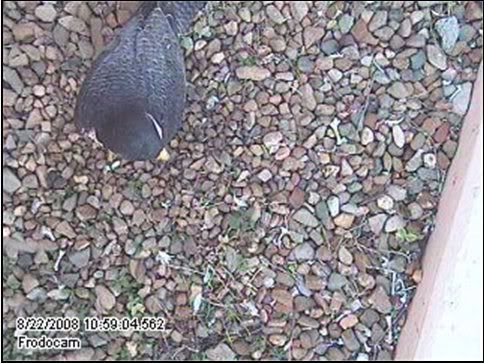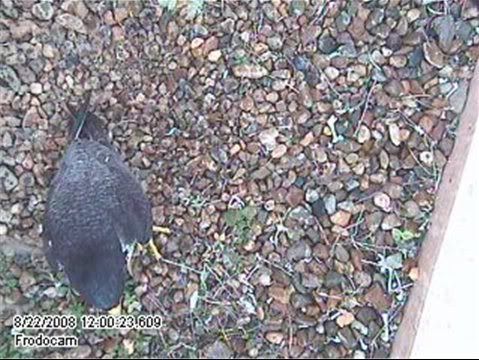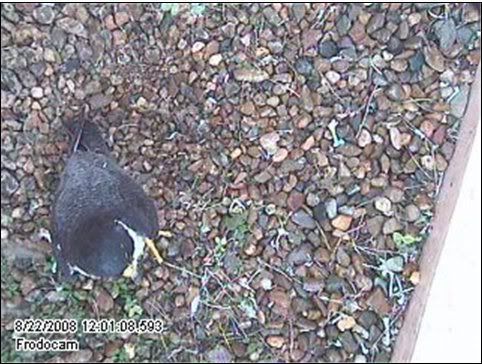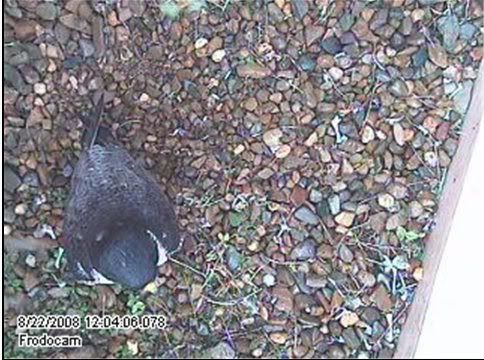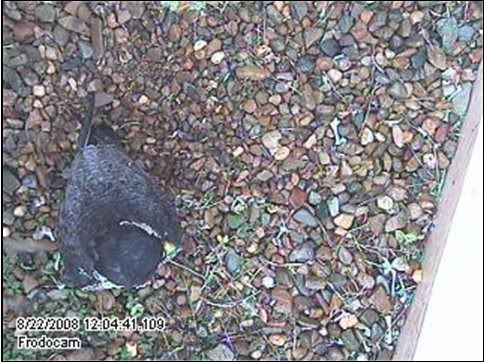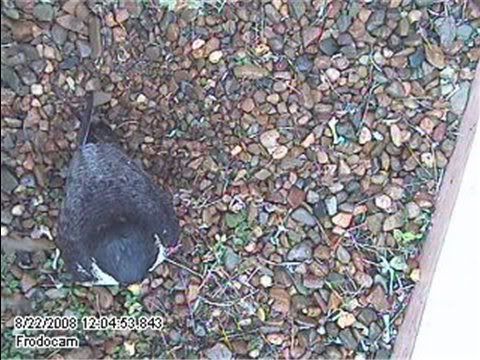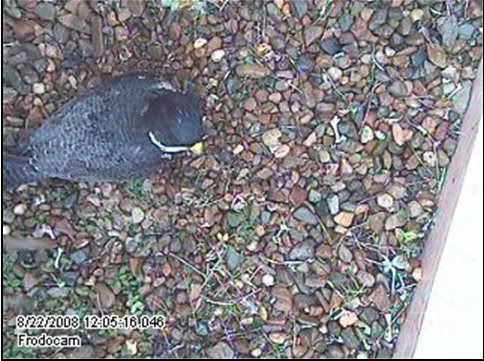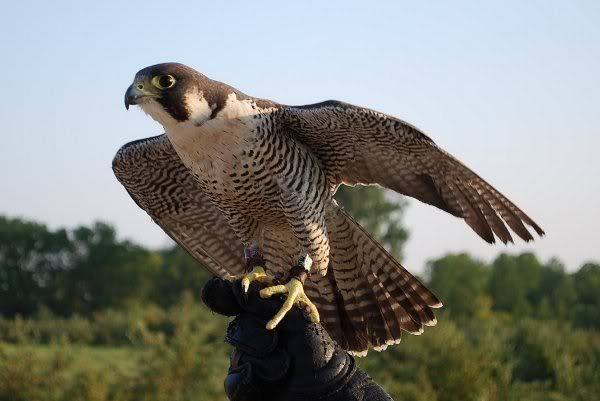
Today there was this wonderful news about the release of Victory of Columbus Ohio back into the wild.
Victory was hatched in Toledo in 2002, and showed up at the Rhodes Tower nestsite in Columbus in 2003. She bonded with the resident male Bandit, but no eggs were produced likely due to her young age. By nesting season 2004, Bandit had been replaced by Orville. Victory and Orville claimed the downtown Columbus territory but again, no eggs were produced. In 2005 however there were 2 young and in 2006, Victory and Orville successfully raised 4 young. But around Labourday 2006 Victory was found badly injured to her left wing.
She was taken into rehab and 5 pins were placed in her wing in order to keep everything in place while the bone heals. When a wing is injured the bones will cure but a damaged tendon will not. Often when a peregrine flies into wire the patagial tendon is so badly damaged it will not heal and the peregrine is grounded for the rest of it's life. Fortunately it turned out that this was not the case with Victory. The wing healed.
A peregrine falcon has enormous flightmuscles which allows her to fly the way she does: fast. Those muscles are used on a daily basis and stay in great shape that way. They are working out every day. Victory was grounded for months. So as soon as her wing wa shealed she had to start flying againa. Victory was housed in a large flight cage and her “therapy” consisted of dedicated volunteers Juanita and Rita Woods and others at the Ohio Wildlife Center forcing her to fly several times a day in order for the wings to be excised on a regular basis. It was a slow process.
She showed strong lift and powerbut tired easily. A huge problem was that several of her flight feathers were broken, an unfortunate occurrence when a bird of prey is kept inside of a cage. So, the next stage in her treatment was to give her “new” feathers to replace the broken ones through the process of imping. The imping of feathers was developed by falconers and uses unbroken feathers from one bird to repair the feathers of another. Donor feathers are obtained from other birds that have died or live birds that have molted. Individual feathers have a unique shape and length and must be matched closely before being joined to the remaining shaft on the bird.

In 2005 a canadian falcon Y/5, that spent some time on the Rhodes Tower died. The carcass was kept in the district freezer for possible education use in the future. Some flight feathers of this female had the right length and shape for Victory. And so Victory got herself in between molts a new set of imped flightfeathers with which she could fly much better. But still a lot of feathers were broken. It was now february 2007.
In April 2007 she was transferred to a falconer who was volunteering his time to work with her. Because of the loss of so many feathers, she had to be held until after her next molt which would be in in summer 2007. Additional feathers were imped but not with the purpose of helping her fly. Rather, the second round of imped feathers were intended to help support the new feathers as they grew back in. It is imperative that the new feathers not be damaged which would be a major setback. She was adjusting well to her new surroundings.
At the beginning of 2008 Victory had a whole new set of feathers after her molt and she was doing really well, but a release only weeks before the breeding season would not be wise. For she would fly straight back to her territory at the Rhodes Tower where Scout and Orville were engaged in courtship. No one wanted a bloody territorial dispute. So Victory continued her training at the falconer and became the strong and healthy feisty falcon she used to be.
And so it became August 22 2008. Victory became her second chance in the wild. She was released far away from the Rhodes Tower and taken to a rural location in southern Ohio. The location was selected so that if she does fly back to Columbus it will take her at least a few days during which time she can build up her strength and get back into wild flight condition and be in better shape for a territorial battle. At least if she does come back. Let's hope she does not.
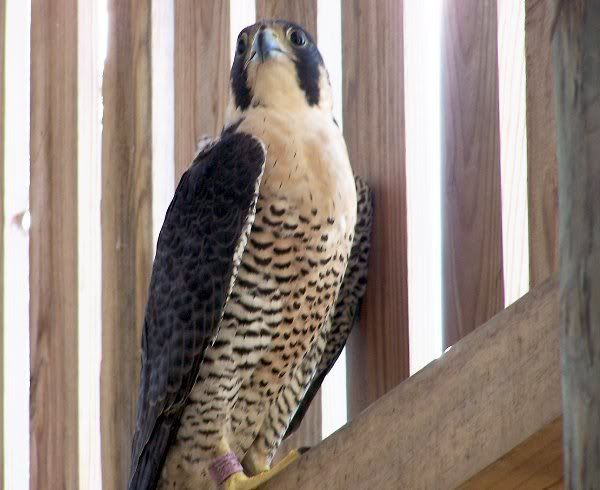
Photo: Juanita Woods
But the fact is that in her mind she still is the resident female of the Rhodes Tower. She was at the time she got injured. She was not driven out by another female. So it might well be she flies straight back. On the other hand she was in rehab for 2 years. Her first goal will be, has to be to stay alive, to catch prey and stay save. To become the strong flyer she was before the injury.
Let's hope and pray she will fly further south and find herself a nice young tiercel with whom she will start all over again.
It must have been a hard decision for the Ohio Wildlife Biologists, but I think it is the only right one. She must be given the chance to be free, fly free and have a second chance at life in the wild.
It is great what they have accomplished to nurse and train this beautiful falcon back to freedom.
Wonderful job!
Read more:
http://ohioperegrinefalcons.blogspot.com/2008/08/victory-for-victory.html

